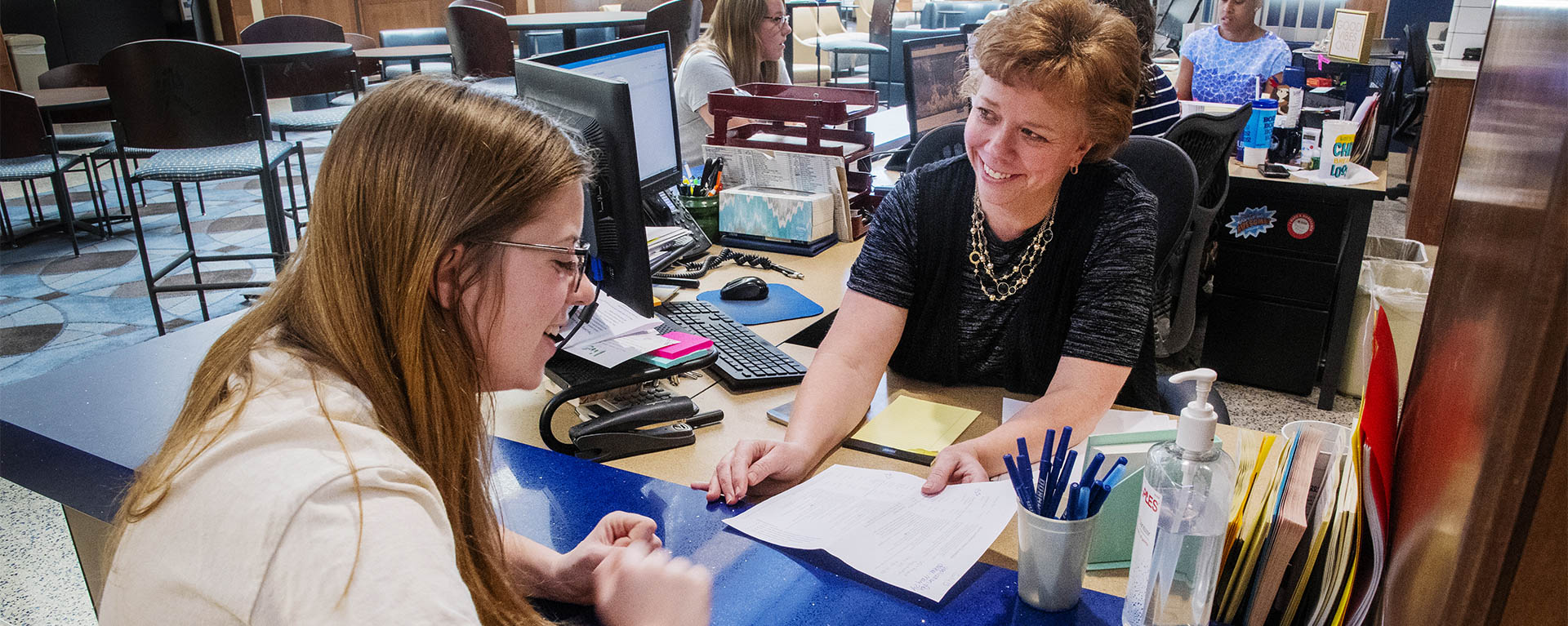
Essential Functions
The Essential Functions have been established through consideration by faculty and consultation through various sources such as the Occupational Outlook Handbook, Dictionary of Occupational Titles, American Society of Radiologic Technologists, Occupational Information Network and Occupational Skills Standards Project from the National Health Care Skills Standards Projects.
The radiologic technology student must have the ability to perform all requirements of the essential functions of a work day.
Reviewed 3/2019, 3/2020, 3/2021
- Completes exams in a reasonable time frame.
- Concentrate for extended period of time.
- Learn and retain new information.
- Apply theoretical concepts underlying the clinical practice of radiology imaging.
- Adapt to changes and varying clinical situations.
- Performs radiology studies with few errors, whether in a radiology department, surgery suite or with a mobile unit.
- Communicate in English effectively and professionally with patients and their families, staff members and providers.
- Explain exam procedures to patients to reduce anxieties and obtain patient cooperation.
- Assess the patient’s condition by asking questions and listening to responses.
- Maintain accurate records/documentation.
- Gather, analyze and correctly interpret information.
- Provide patient-centered, clinically effective care for all patients regardless of age, gender, disability, special needs, ethnicity or culture.
- Speak with patients in a professional and empathetic manner to alleviate any concerns they express.
- Must appropriately touch patients of the same, as well as opposite gender during imaging exams.
- Adhere to national, organizational and departmental standards, protocols, policies and procedures regarding radiology exams and patient care.
- Consistently maintain patient confidentiality standards and HIPAA requirements.
- Perform safe, ethical and legal practices.
- Work within a clinical environment, which involves exposure to persons with physical and mental disabilities; and to pain, death, stress, communicable diseases, blood and body fluids, toxic substances and noxious odors.
- Exhibit teamwork skills and cooperation and respect for peers, faculty, supervisors and other professionals.
- Work around others, as well as alone.
- Modify behavior/performance in the clinical education setting after feedback from the technologist or supervisor.
- Show problem-solving ability sufficient to organize and complete multiple tasks accurately and within assigned periods.
- Independently initiate routine job tasks.
- Demonstrate competency in clinical judgment and safety precautions.
- Maintain poise and flexibility in stressful or changing conditions.
- Carry out detailed, simple or complex written or oral instructions.
- Maintain personal hygiene consistent with tasks.
- Stamina is required since radiologic technologists are on their feet throughout the workday (8 to 10 hours). Must be able to work with radiation safety devices such as a lead apron for extended periods of time.
- Stand, crouch, stoop, bend, balance, twist at neck and waist, and reach/grasp in front of body, to sides of body and below knees. Reach above shoulder level intermittently for 90% of work time. Must be able to walk without assistance of canes, crutches or walkers. Gait, or walking pattern, must be confined to a small area so that sterile trays or patients will not be disturbed in small rooms.
- Moderate strength factor is required in order to frequently lift and carry 25-50 pounds (or more) routinely. Includes accessory equipment, mobile units, wheelchairs, stretchers, patients and immobilization devices.
- Display physical strength to move patients who may be disabled or have a limited range-of-motion.
- Manual dexterity to manipulate the imaging table, position the patient properly on the imaging table, operate associated equipment (beam restriction, cart, wheelchair, oxygen tank, etc.) and manage equipment controls.
- Must use eyes, hands and fingers with skill in a limited time period (imaging exam set-up, etc.).
- Perform CPR as applicable.
- Read typewritten, handwritten and computer information.
- Distinguish colors and opacity.
- Depth perception and acuity in judging distances and spatial relationships.
- Must be able to observe patients directly during the imaging process to ensure the patient’s well-being.
- Be able to work effectively in areas with varying light levels from bright to dim.
- Evaluate radiographic images for appropriate clinical information, image quality and patient information, e.g. be able to distinguish subtle changes in resolution such as motion.
- Recognize emergency situations such adverse reactions to contrast administration, breathing difficulty, cardiac arrest, diabetic-related problems, shock, etc.
- Must be able to hear clearly a patient, staff member or provider during oral communications which may be directly or over an auditory monitoring system.
- Background or distracting noise may be present in the examination or work area.
- Function efficiently in an emergency situation, pain management setting and surgical setting where medical personnel are wearing protective masks.
- Practices accepted radiation protection techniques for patient, technologist and others.
- Ability to maintain a safe environment for patient and technologist.
- Evaluate the imaging equipment for proper function in order to assure patient and operator safety.
- Detect, interpret and appropriately respond to verbal and non-verbal communication, acoustically generated signals (call bells, monitors, phones, alarms).
GET IN TOUCH WITH Department of Allied Health
Allied Health Department
School of Applied Studies, Room 201
1700 SW College Ave.
Topeka, KS 66621
Phone & Email
785.670.2170
allied-health@washburn.edu

